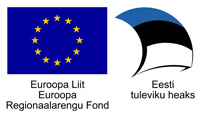The field of curative mud and mud treatment
- Studies and analyses of curative mud
- Studies and analyses of mud treatment
- Expert opinions and counselling
- Participating in scientific studies and research
- Organising training events
Mud laboratory
- Laboratory analyses and testing of curative mud, including:
- Freeze-dryer
- Determining the water content of samples and creating a structure suitable for subsequent analyses
- XRF-spectrometer
- In the mineral part it is possible to determine elements Na to U. It is suitable for qualitative as well as quantitative analysis.
- In curative muds the XRF method enables us to determine n24 main chemical elements (Si, Al, K, Ca, Mg, Fe, Mn, Zr, Ti, Ba, Th, Nb, Sr, V), potentially toxic heavy metals (Pb, Ni, Zn, Cu, Cr, Cd) and non-metals (P, S, Br, Cl).
- HPLC (high performance chromatography)
- It is suitable for studying the organic component: pigments, algae toxins, toxic substances (PAH, PCP). For example, it is possible to determine the content of antioxidant substances. According to literature, about 20 pigments have proven bioactive effects (e.g. beta carotene, lutein, canthaxanthin, etc.)
- Additional options in the laboratories of Tallinn University Ecology Centre:
- Determining the proportion of the mineral and organic matter thermogravimetrically
- Grain size analysis
- Grinding curative mud with disintegrator

